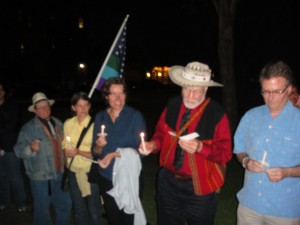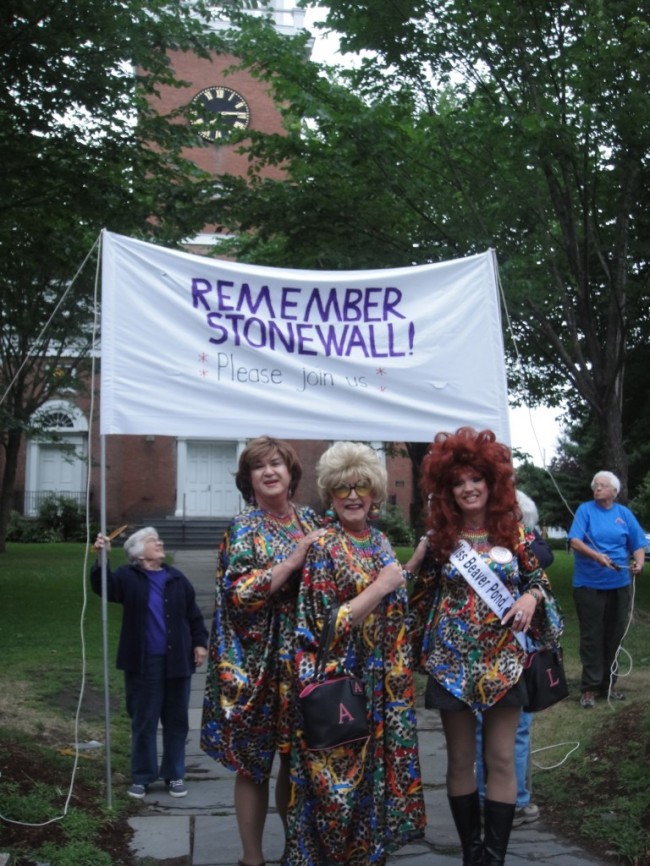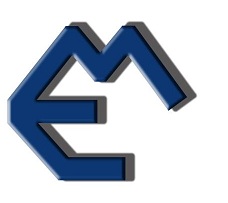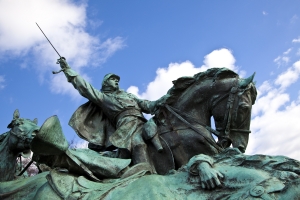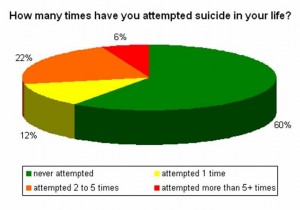I am merely a student of history. And history for me, is very personal. 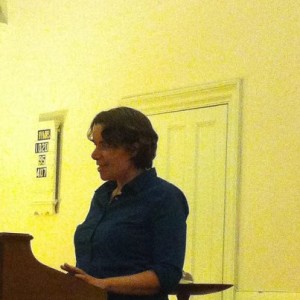
Learning about those who came before me—those who lived their lives, fought their battles, developed and expressed their identities—is what has helped me to continue to work on my own identity and how I can contribute to our amazing community. That is one of the reasons I have been working with The Vermont Queer Archives, a small collection of materials relating to LGBT history in Vermont and a program of the RU12? Community Center.
I became aware of the “Stonewall Riots” through Pride marches and protests while growing up in New York City in the 1970s and 1980s. I also became aware that the mere fact that such a community would express itself resulted in other groups and individuals acting as if we did not have the right to do so. By the time I became aware of my own identity and how I connected to the Stonewall Riots, the very people who could have told me more about them—the drag queens and activists who I had known—were gone, lost in the AIDS epidemic.
The Stonewall Riots were events that involved people from all sorts of backgrounds—gay men, lesbians, drag queens, trans-folk, street kids living in Christopher Park, folk singers and people passing by. For me, that diversity of people has always been a part of the story. It was a more diverse and dynamic congregation than the early homophile groups that were growing and making their own pushes for change at the same time. Events such as the Stonewall Riots helped to put all sorts of LGBT community protests on the front pages and in the consciousness of members of all sorts of communities.
In 1969, there were no legal places where LGBT people could get together. Organized crime controlled the few gay bars that existed in New York City. A gay bar could expect to be raided at least once a month, no matter what “payoff” they gave to the NYPD. The Stonewall Inn was one of those bars. It had no running water (the glasses were dunked into standing tubs of water) lacked proper toilets and was one of the only places in New York City you could go dance with someone of the same sex. It is no surprise that in this tense, repressed, bigoted atmosphere that something was going to give.
There had been previous protests, of course. The events and what followed at Stonewall came after 10 years of intensive political activism by a small group of members of such organizations as the Mattachine Society and the Daughters of Bilitis. Mattachine, begun by Harry Hay in Los Angeles in 1951, opened chapters across the country, focusing on providing public forums for medical views sympathetic to homosexual civil rights; creating protective, supportive social networks for homosexuals; and providing a clearinghouse for legal, medical, and personal advice for homosexuals in jeopardy. During the same period, the Daughters of Bilitis, founded by Del Martin and Phyllis Lyon in San Francisco in 1955, provided similar support, connection and political information for lesbians. The New York chapter was started in 1958 by Barbara Gittings, who went on to edit the organization’s national journal, The Ladder, one of the first radical lesbian literary journals in America.
By the early 1960s, a new generation of activists had become frustrated with these methods. In 1965 the Mattachine Society of Washington, D.C., under the leadership of Frank Kameny, began picketing the White House, the Pentagon, and the State Department to protest the exclusion of homosexuals from military service and federal employment. These pickets led to annual Fourth of July pickets of Independence Hall in Philadelphia each year until 1970, when annual Gay Pride marches began to take hold.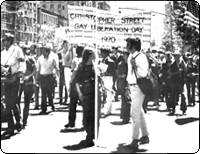
In 1966, what became known as the Compton Cafeteria Riots took place on a hot August night in San Francisco California. Transgender customers at the Compton cafeteria became “raucous” in the 24 hour cafeteria and hangout. The police were called, and one of the customers, after being grabbed by a police officer, fought back. A riot ensued. Following the riot, activists established the National Transsexual Counseling Unit, one of the first peer support and advocacy organizations in the world.
In New York City in 1969, newspaper coverage, flyers and word of mouth of the events at the Stonewall Inn led to outrage and people gathered there throughout the week. It was one of the moments in history when—as Craig Rodwell, who was there puts it—“There was a very volatile active political feeling, especially among young people … when the night of the Stonewall Riots came along, just everything came together at that one moment. People often ask what was special about that night … There was no one thing special about it. It was just everything coming together, one of those moments in history that if you were there, you knew, this is it, this is what we’ve been waiting for.”
Stonewall very quickly led to further organization and action. The first “Gay Power” meeting was held on July 9, 1969. Attendees included members of the Mattachine Society and people described as “socialists, would be revolutionaries, street people”—this was an historic event (in my humble opinion). This MIX of people is what could lead to changes in society. This MIX of methods of protest, legislation and change would become a template for future LGBT activism.
On June 28th, 1970, Christopher Street Liberation Day was celebrated with a Gay Liberation March, immediately called “the annual birthday celebration of the gay liberation movement”.
LGBT people in Vermont had also begun to organize. There were already gay and lesbian groups in Vermont, including communal homes and cooperatives. Discussion and support groups were in existence in the 1970s (I only know of these primarily through oral histories). The feminist publication COMMONWOMAN, which covered lesbian issues, began publication in 1978. By 1980, the organization Vermonters For Lesbian and Gay Rights formed, and this group also became involved in organizing Pride marches. In 1986, the first issue of OUT IN THE MOUNTAINS, a monthly LGBT newspaper, was published. That same year the Lesbian and Gay Coalition was formed. These groups were able to organize and push for protective laws such as the Hate Crimes Act of 1990.
Vermont’s first Pride Parade was held on June 25th, 1983. As one of the caretakers of the Vermont Queer Archives (a program of the RU12? Community Center), I have been able to collect some of the earlier posters. The first Pride was put together by a variety of people from different portions of the LGBT community and was known as “Lesbian and Gay Pride Day”. The poster featured the mountains of Vermont and the statement “Water Won’t Run Straight and Neither Will We.” As noted in papers and oral histories, many of the first marchers and organizers were women. Supportive letters from Patrick Leahy and Burlington Mayor Bernard Sanders were read. The march was through downtown Burlington and Church Street.
In 2000, the Stonewall Inn was designated a National Landmark. LGBT history is becoming more recognized. And we still have a long way to go, because there is a great deal that people of all identities can learn from each other’s histories.
Working together—answering the question asked at the Stonewall Inn of “Isn’t anyone going to do something?”—can lead to true victories such as Civil Unions, Marriage and job protections. We have seen this happen in Vermont, and there is still more work to do.
There is a continuing need for community— from community centers to bars to social events to support services —even as these rights are gained. We still need to DO SOMETHING—to be here for each other, to be here for those who come after us. To be able to stand up and defend our community, to keep supporting each other as we deal with aging, with bullies, with homophobia. As Stonewall led to marches and protest, so we can continue the work of those who came before us.
There is so much more we can learn about our history. Please keep telling your stories, sharing your experiences in Vermont and elsewhere. We need to keep talking—and to keep doing something.